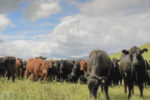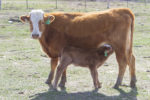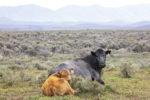Reproduction
A team of researchers is analyzing the practical and economic feasibility of using GPS eartags to monitor bull libido and breeding success on pasture.
Read More
Practical applications of genomics tools for improving commercial beef cattle efficiency: Livestock Gentec research update
Here are a few practical considerations for using genomic tools to improve the profitability of your herd.
Read More
Progressive Events: Pushing for reproductive progress at 2024 DCRC annual meeting
The Dairy Cattle Reproduction Council annual meeting brought reproductive professionals together to discuss methods in which progress might be made. Topics included embryo viability, sustainability efforts, beef-on-dairy trends, data management and more.
Read More
Four tips to help unlock the potential of beef-on-dairy
Beef-on-dairy can be a viable and useful option for increasing calf value. However, for maximum return, farms should provide quality care and strategize when they sell them.
Read More
Being profit-minded for your next bull purchase
No matter how solid a bull’s genetics may be, much depends on an individual producer’s ability to keep that bull healthy and in good breeding condition.
Read More
Larmer named World Dairy Expo International Person of the Year
A decorated career in dairy cattle genetics culminates in the prestigious World Dairy Expo International Person of the Year Award for Paul Larmer as he reflects on his 40-year vocation.
Read More
How trace mineral status affects reproductive efficiency in bulls
When working to maximize fertility in cattle, cows are often the focus. However, bull fertility is a crucial consideration for any beef operation.
Read More
Data into profit: Using genomic tools to produce and select superior replacement heifers
Analyzing genomic data can help producers hone in on the most valuable traits for their operations. Genomic research shows that managing to improve hybrid vigor will increase fertility, longevity and lifetime productivity.
Read More
Understanding lactation and cow efficiency
Milk production is a big focus in the industry, but selecting for that trait may not always equate directly to cow efficiency.
Read More
Genetic improvement driven by distinct factors
Improving a cow herd’s genetics can happen from many different points of origin and emphasize even more tactics. Fortunately, a few factors top the list when looking for guidance on these important decisions.
Read More











